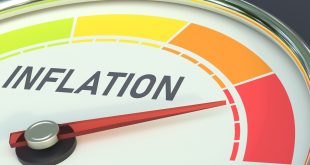The Fed’s favorite inflation gauge slowed in March, in its first retreat in more than one year, according to a report issued Friday in the run-up to next week’s meeting of the policy-setting Federal Open Market Committee.
PCE data gives a reading of the Personal Consumption Expenditures Price Index that excludes volatile food and energy costs, gained 5.2% from a year earlier, a slower pace than the 5.3% annualized increase in February. The overall index jumped 6.6%, a faster pace than February’s 6.3% increase and a new 40-year high, according to the government report.
On the docket for next week is obviously the Fed interest rate decision. 50 bps a nailed-on certainty but how hawkish policymakers could be after this week’s equity selloff and more geopolitical woes. The initial US GDP read this week was surprisingly weak but within the reading employment remained red hot as did the consumer so the Fed has to keep raising in spite of the deteriorating economic picture globally.
Friday’s employment report will then draw markets’ focus. Last month was red hot and caused another leg higher in yields. The unemployment rate is forecast at 3.6% and employers are still struggling to fill vacancies. Unemployment typically hits a low about 6 to 9 months ahead of a recession.
The improvement in the core reading isn’t enough to deter Fed officials next week from approving the second hike to their benchmark rate in three years. The surge in the overall index was fueled by an 18% jump in the price of gas for automobiles sparked by Russia’s invasion of Ukraine.
Core inflation momentum certainly improved the last two months after four months of alarming increases. Additionally; surging food and energy prices are pushing up the headline index and those increases are too high.
The inflation report assures a 50-basis-point hike at next week’s meeting. Slowing momentum in core prices provides some optimism heading into the second quarter. Spending and income momentum are also falling, reducing some price pressure in the months ahead as inflation-adjusted disposable income leaves less for households to spend.
On Thursday, traders in futures markets had signaled a 97% probability of a half a percentage point hike at next week’s Fed meeting, according to the CME’s FedWatch tool. After the release of the inflation report on Friday, the odds rose to 99%.
At last month’s FOMC meeting, Fed officials increased the overnight lending rate by a quarter of a percentage point and signaled additional tightening of monetary policy was ahead. The committee will release its decision on Wednesday at 2 p.m., followed by a press conference at the Eccles Federal Reserve Board Building in Washington.

 Noor Trends News, Technical Analysis, Educational Tools and Recommendations
Noor Trends News, Technical Analysis, Educational Tools and Recommendations




